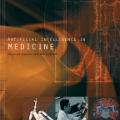Cyber-physical systems (CPS) are interconnected architectures that employ analog, digital, and communication resources for their interaction with the physical environment. CPS are the backbone of enterprise, industrial, and critical infrastructure. Thus, their vital importance makes them prominent targets for malicious attacks aiming to disrupt their operations. Attacks targeting cyber-physical energy systems (CPES), given their mission-critical nature, can have disastrous consequences. The security of CPES can be enhanced leveraging testbed capabilities to replicate power system operations, discover vulnerabilities, develop security countermeasures, and evaluate grid operation under fault-induced or maliciously constructed scenarios. In this paper, we provide a comprehensive overview of the CPS security landscape with emphasis on CPES. Specifically, we demonstrate a threat modeling methodology to accurately represent the CPS elements, their interdependencies, as well as the possible attack entry points and system vulnerabilities. Leveraging the threat model formulation, we present a CPS framework designed to delineate the hardware, software, and modeling resources required to simulate the CPS and construct high-fidelity models which can be used to evaluate the system's performance under adverse scenarios. The system performance is assessed using scenario-specific metrics, while risk assessment enables system vulnerability prioritization factoring the impact on the system operation. The overarching framework for modeling, simulating, assessing, and mitigating attacks in a CPS is illustrated using four representative attack scenarios targeting CPES. The key objective of this paper is to demonstrate a step-by-step process that can be used to enact in-depth cybersecurity analyses, thus leading to more resilient and secure CPS.
翻译:网络-物理系统(CPS)是利用模拟、数字和通信资源与物理环境互动的相互关联的结构;CPS是企业、工业和关键基础设施的支柱;因此,这些系统至关重要,因此成为恶意袭击的重要目标,旨在扰乱其运作;以网络-物理能源系统(CPS)为目标的袭击具有灾难性后果;CPS的安全可以加强测试能力,以复制电力系统操作,发现脆弱性,制定安保对策,评价故障引发或恶意构筑的假设情景下的电网运作;在本文件中,我们全面概述了CPS的安全形势,重点是CPES;具体而言,我们展示了一种威胁模型方法,以准确反映CPS元素、其相互依存性以及可能的攻击切入点和系统脆弱性;利用威胁模型的制定,我们提出了一个CPS框架,旨在界定硬件、软件和模拟CPS系统所需的模型,并构建高密度的PS模型,用以评价系统在不利假设情景下的业绩;我们展示了C-具体风险度评估,从而评估了C-评估了C-风险度的进度,从而评估了C-具体评估了C-风险度评估。



